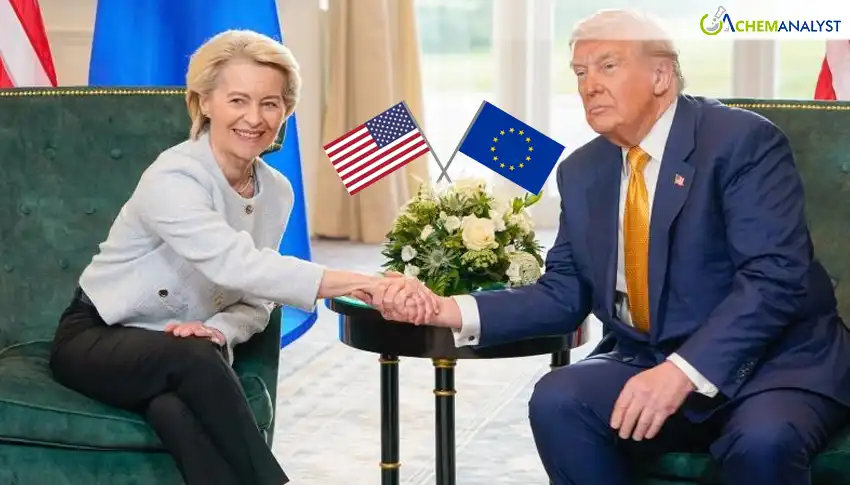Welcome To ChemAnalyst

The agreement aims to restore stability and predictability to the world's most valuable economic relationship, worth over €1.6 trillion annually, while also suspending the EU's retaliatory measures.
The European Union and the United States have solidified a political agreement establishing a framework designed to bring stability and predictability to their immense transatlantic trade and investment relationship. The agreement is a result of intensive negotiations led by EU Trade Commissioner Maroš Šefcovic and his U.S. counterparts, Secretary of Commerce Howard Lutnick and U.S. Trade Representative Jamieson Greer.
At the core of the new framework is a significant change to the U.S. tariff regime on EU goods. The Joint Statement details a new, all-inclusive maximum tariff rate of 15% for the vast majority of EU exports. This new ceiling will apply to sectors that have been subject to trade tensions, including cars, pharmaceuticals, semiconductors, and lumber.
For goods already facing Most Favoured Nation (MFN) tariffs of 15% or higher, no additional tariffs will be imposed. The agreement also includes a special regime, effective as of September 1, for a number of product groups that will be subject to only MFN tariffs. These include unavailable natural resources like cork, all aircraft and aircraft parts, and generic pharmaceuticals and their ingredients. Both sides have agreed to work on expanding this list to include more product categories.
For the automotive sector, a key area of concern, the 15% U.S. tariff ceiling will be applied in conjunction with the EU starting procedures to reduce tariffs on U.S. products. This reciprocal action is a central element of the deal aimed at de-escalation. The agreement also addresses the global overcapacity in the steel and aluminium sectors. The EU and U.S. intend to cooperate on securing their supply chains and economies from the destabilizing effects of excess production, including through a tariff rate quota solution for EU exports of steel and aluminium.
The move comes as the EU suspended its retaliatory "rebalancing measures" on August 7, which had been adopted on July 24 in anticipation of escalating trade tensions. The suspension of these measures, which targeted U.S. goods, is a direct result of the political breakthrough.
European Commission President Ursula von der Leyen hailed the deal as a success, stating, "The European Union will always pursue the best outcomes for its citizens and businesses. Faced with a challenging situation, we have delivered for our Member States and industry, and restored clarity and coherence to transatlantic trade." She also emphasized that this is a first step, with continued engagement with the U.S. expected to negotiate further tariff reductions and identify new areas of cooperation.
We use cookies to deliver the best possible experience on our website. To learn more, visit our Privacy Policy. By continuing to use this site or by closing this box, you consent to our use of cookies. More info.
